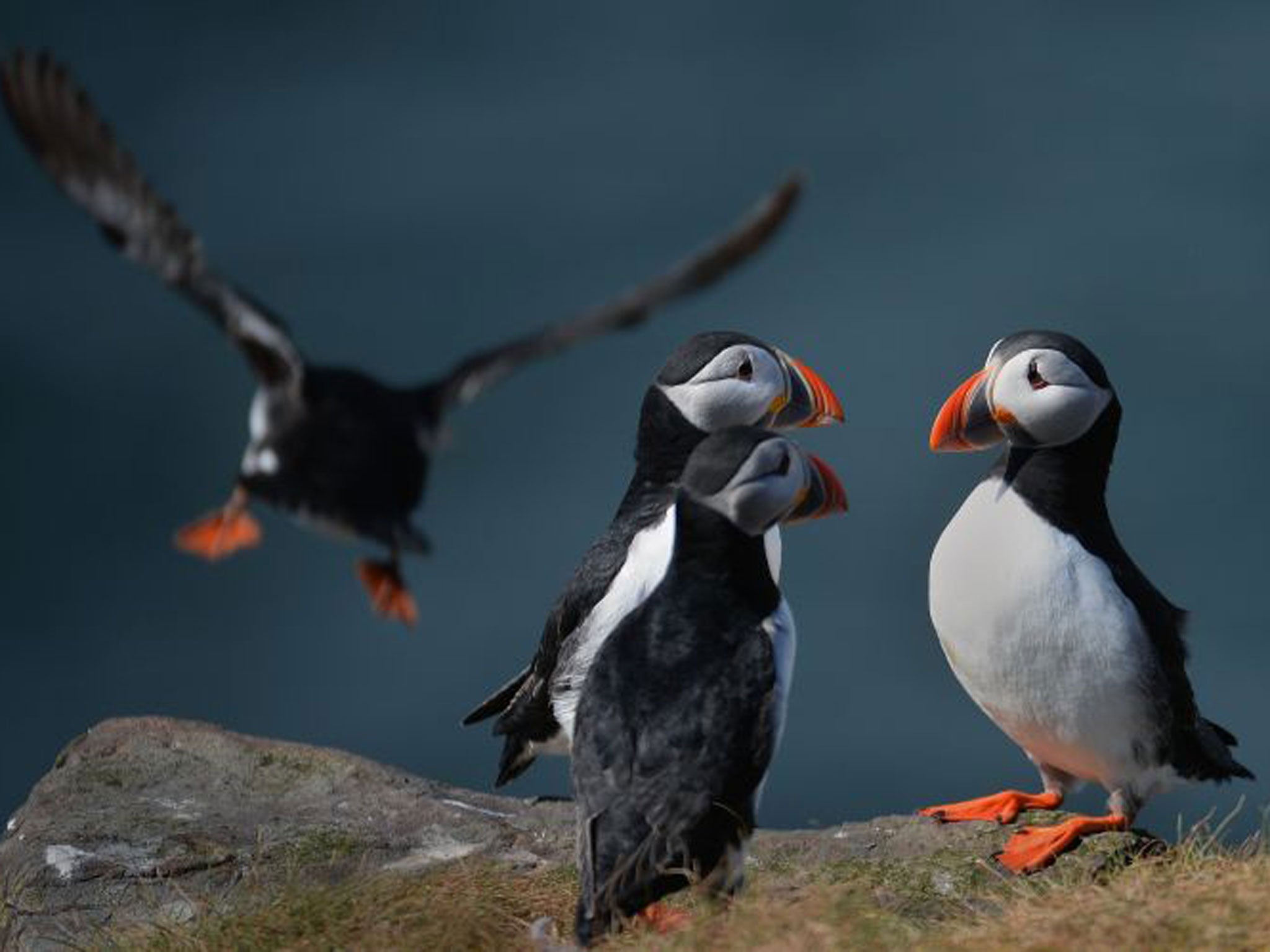Warm weather could destroy Britain’s coastal wildlife: Puffins, Cliff Tiger Beetles and Little Terns among those in danger becoming extinct

Puffins, Cliff Tiger Beetles and Little Terns are among dozens of coastal species that are in danger becoming extinct in the UK in the coming decades, as rising sea levels and warmer water destroy their habitat, according to the National Trust.
Britain's 8,050 miles of coastline is under seige from the elements, as climate change increases the number and severity of storms, which exacerbate the coastal erosion caused by rising sea levels.
Furthermore, the warming of coastal eco-systems makes them less hospitable to traditional inhabitants.
These changes threaten to “radically change the face of wildlife on our coast,” with half of Britain's coastline likely to be affected by increased coastal erosion and flooding in the future, the National Trust warns.
The danger has prompted the Trust to publish a list of six “coastal canaries in the mine”. Four of them concern those plant and animal species most at risk of local extinction, a list that also includes the Oysterplant.
The puffin is probably the most endangered of the coastal species and could potentially leave the UK within two decades unless a replacement can be found for the cold-water dwelling sand eels that provide its main food source and which are swimming north as the British waters warm.
All four of the endangered canaries in the mine - and a host of other marine species - are likely to be locally extinct by the end of the century, many of them becoming so within the next twenty to 50 years, the National Trust warns.
The other two “canaries” - the Glanville fritillary butterfly and the Triggerfish - are expected to prosper as a result of climate change. The report notes that there have been occasional sightings of grey Triggerfish, a species traditionally found in the warmer waters of the Atlantic and Mediterranean, off the coast of North Wales.
The accelerating erosion of the coastline poses a further danger to its wildlife, exposing the foundations of concrete “sea defences” on beaches and reducing their ability to fight further erosion, the National Trust points out.
“The coast is at the forefront of how a changing climate will affect wildlife in the UK and is very vulnerable to the forces of change,” said David Bullock, head of Nature Conservation at the National Trust.
Matthew Oates, the Trust's national specialist on nature and wildlife, said: “Climate change could change the face of our coastal flora and fauna. We are likely to see the boom and bust of more specialist plants and animals, as they suffer from increased flooding, salt deposition or drought stress. Unfortunately there may be more bust than boom.”
Although not in the Canary-six, the report points out that warming seas have led to an influx of other invasive non-native species, such as zebra mussels and japweed, which can proliferate on boats, jetties, and in rock pools, able to survive in increasingly moderate sea temperatures.
Species at risk: Winners and losers
The four losers
Little Tern These nest in loose colonies on sand and shingle beaches such as Blakeney Point, just above the high tide line. This makes their nests very vulnerable to exceptional high tides and summer storms.
Puffin They are suffering as their main food source - the sand eel - moves further forward in search of cooler water. The best apparent alternative, the bony and indigestible snake pipefish, is a poor substitute because they frequently choke baby puffins to death.
Oysterplant This grows on exposed shingle beaches along the north-west coast of England, Scotland and Northern Ireland. Although it requires some disturbance to maintain its open shingle habitat, extreme storms could wash it away completely.
Cliff tiger beetle: This relies on relatively large areas of bare clay being exposed through cliff slumps and slippages. It lacks the ability to move if conditions suddenly become difficult, for example through storms or development.
The two winners
Triggerfish This non-native species is starting to be seen off the coast of North Wales, as a result of the warming sea. It is normally found in the warmer waters of the Atlantic and Mediterranean.
Glanville fritillary butterfly This thrives on gradually eroding, warm, south-facing cliffs, meaning, on balance, it is likely to prosper in the coming decades. However, it also faces dangers in the form of habitat loss through coastal development and erosion.
Subscribe to Independent Premium to bookmark this article
Want to bookmark your favourite articles and stories to read or reference later? Start your Independent Premium subscription today.

Join our commenting forum
Join thought-provoking conversations, follow other Independent readers and see their replies